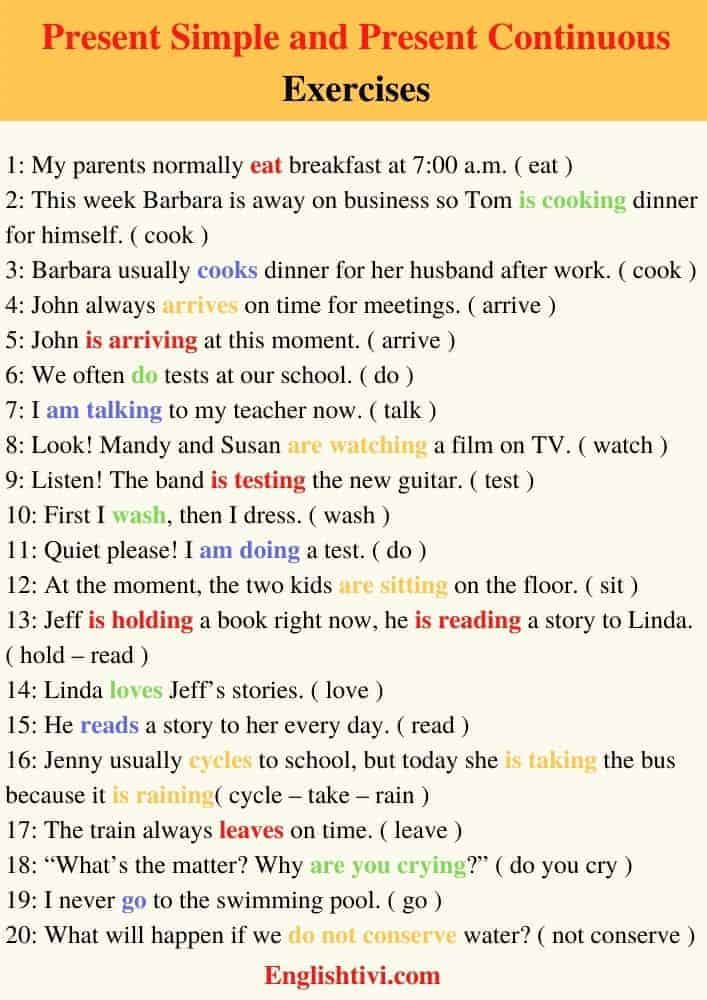
Present Simple and Present Continuous Englishtivi
The present continuous (present progressive) tense is a way to convey any action or condition that is happening right now, frequently, and may be ongoing. It adds energy and action to writing, and its effect helps readers understand when the action is happening.

Pin on Gramatyka angielska
We can use the present simple to talk about things we do regularly. We can use the present continuous to talk about things we are doing now. I play basketball every Sunday. I'm playing hockey now. She eats fruit every day. She's eating an apple now. How to use them For the present simple, add s or es for he, she and it.

Present Simple vs. Present Continuous Present simple and present
Transcript. We use the present continuous (am/is/are + -ing) to talk about temporary things which have begun but haven't finished. They are often happening now, at this moment. Here are some examples of things happening now. I'm just uploading some photos to Facebook and I'm sending a message to Billie.
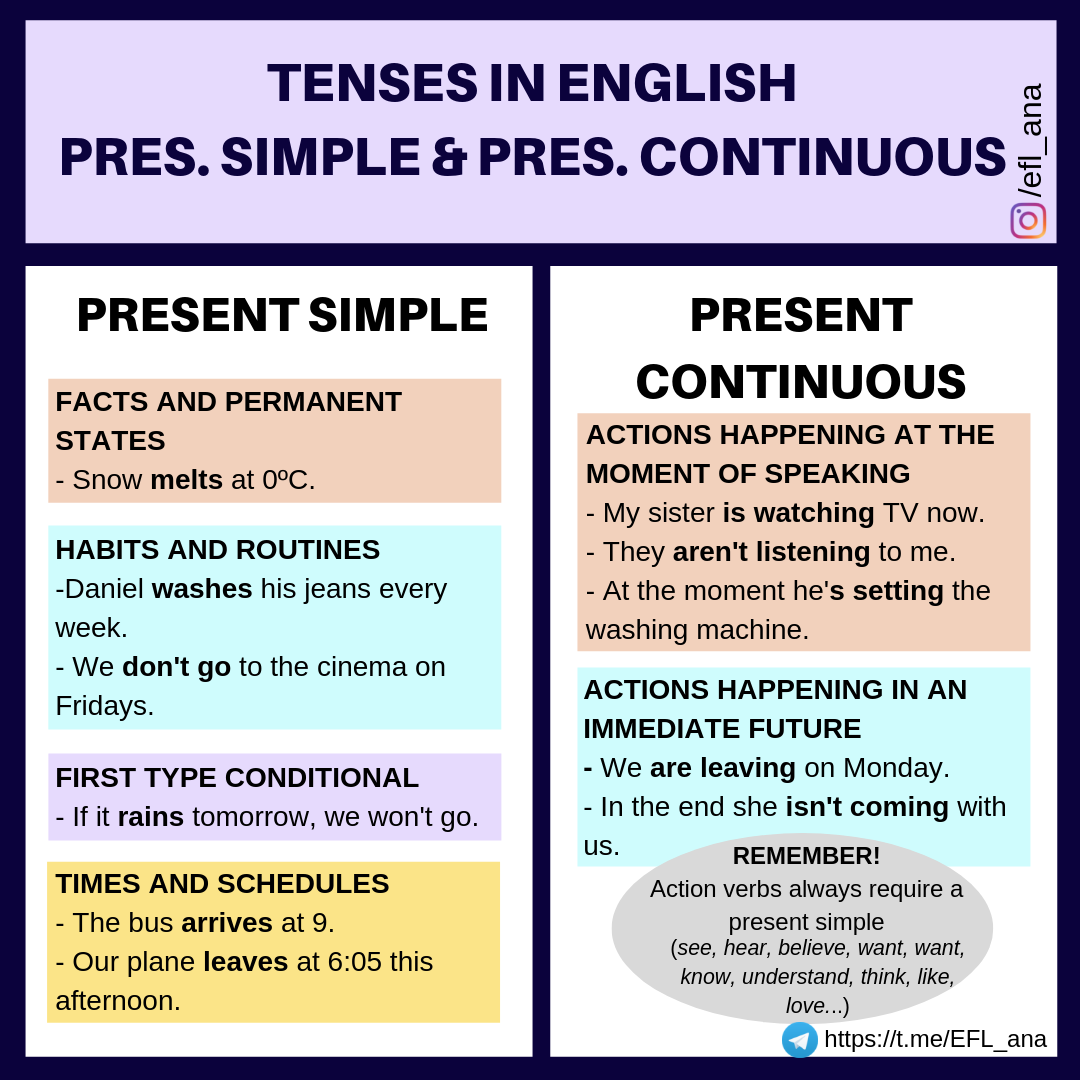
CPI Tino Grandío Bilingual Sections Present simple and present continuous
(also called Present Progressive) We often use the Present Continuous tense in English. It is very different from the Present Simple tense, both in structure and in use. How do we make the Present Continuous tense? The structure of the Present Continuous tense is: The auxiliary verb (be) is conjugated in the Present Simple: am, are, is
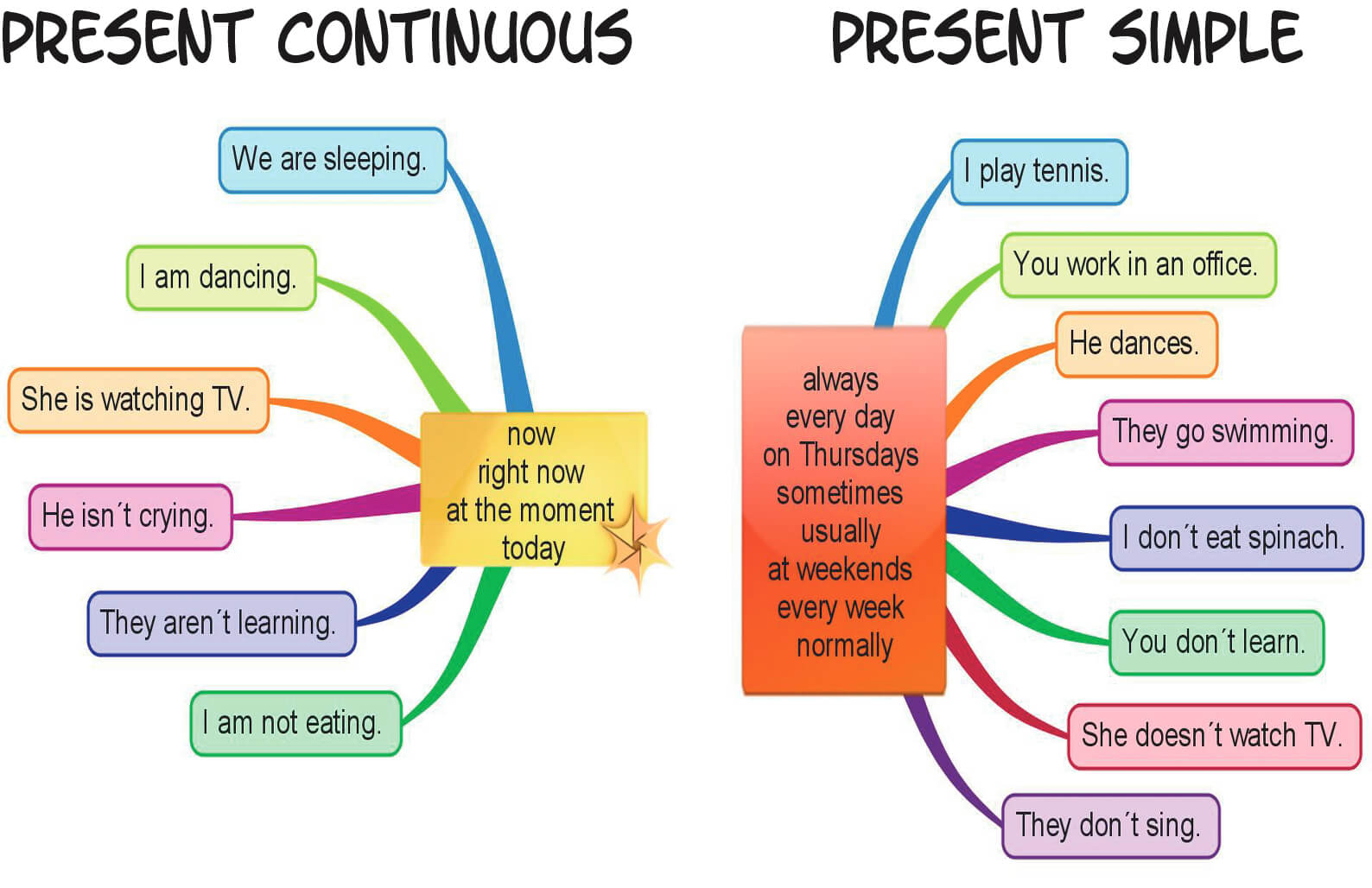
PMAR2 UNIT 1 PRESENT SIMPLE vs PRESENT CONTINUOUS
Introduction Charlotte has got a class on the present simple and the present continuous. Download the free worksheet, join the class and improve your English! Language focus present.

PRESENT SIMPLE AND CONTINUOUS interactive and downloadable worksheet
Present Simple and Present Continuous Present Simple - Positive. This is made of: subject + infinitive without 'to' for I, you, we and they. For he, she and it, we add -s or-es to the infinitive.

Present Simple vs. Present Continuous Platzi
The formula for creating a sentence in this verb tense is: Subject + root verb/ -s / -es form of the verb. Present simple questions require you to change the order of the subject and auxiliary verb for the formula. Here is the correct question form: Do/does + subject + root verb. The negative form is: Subject + does not + root verb.

Present Simple and Present Continuous Important Differences
Present Simple: Present Continuous: I work from 9:00 AM to 5:00 PM. I'm currently working on a new project. Mark studies English every day. Mark is studying the present continuous at the moment. We usually go to Europe in the summer. Right now, we're going to the supermarket. They always talk to their boss in the morning. They're talking.

Present Simple vs Present Continuous Interactive worksheet
Grammar explanation Basic contrasts We use the present simple to talk about: something that is always or generally true When you heat ice, it melts. something that happens regularly I go swimming twice a week. continuing states. She's very happy with her job. We use the present continuous to talk about: actions which are in progress at the moment

present Simple vs Present Continuous Present continuous worksheet
What's the difference? Download this page in PDF Remember: We use the present simple with stative verbs. We can't use any continuous tense (including the present continuous tense, of course) with stative verbs. Click here for more information about the present simple tense Click here for more information about the present continuous tense

Valme's English Corner Present Simple vs. Present Continuous
Present Continuous or Present Simple Exercise 1 Perfect English Grammar Choose the present simple or the present continuous. Try another exercise about the present continuous and present simple here Try this exercise in video here Click here to review how to make the present continuous. Click here to review how to make the present simple.

Present simple and continuous English ESL worksheets pdf & doc
Present Continuous - activities that are happening now, temporary situations, activities in progress and future arrangements. For positive sentences, the form is subject + am/is/are + verb-ing .
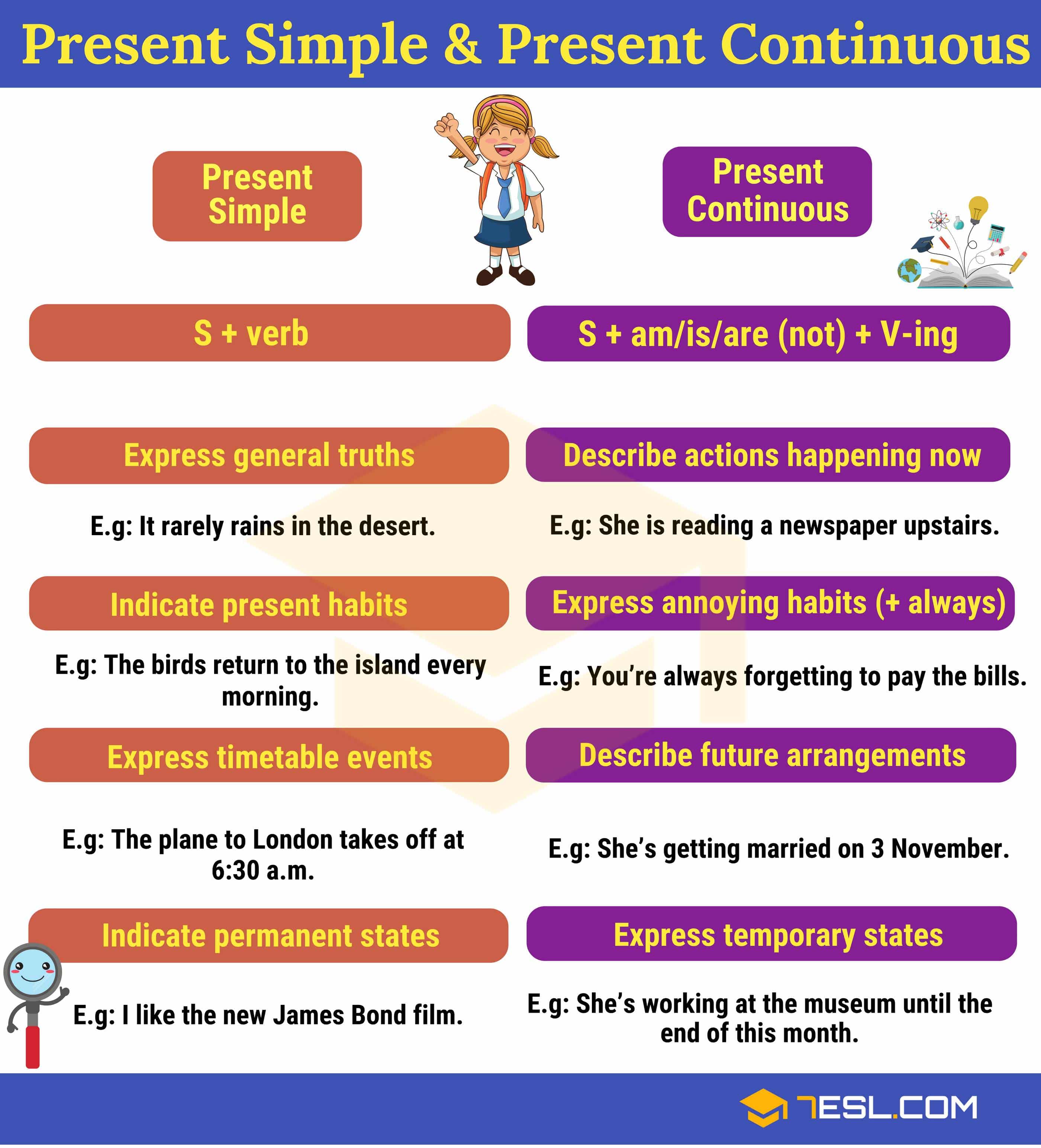
Differences between Present Simple and Present Continuous 7 E S L
Introduction: The present continuous or the present progressive tense is used to tell about whatever action is happening at the time of speaking. Any temporary action, and/or an incomplete action is expressed in the present continuous tense. It is also known as present progressive tense.
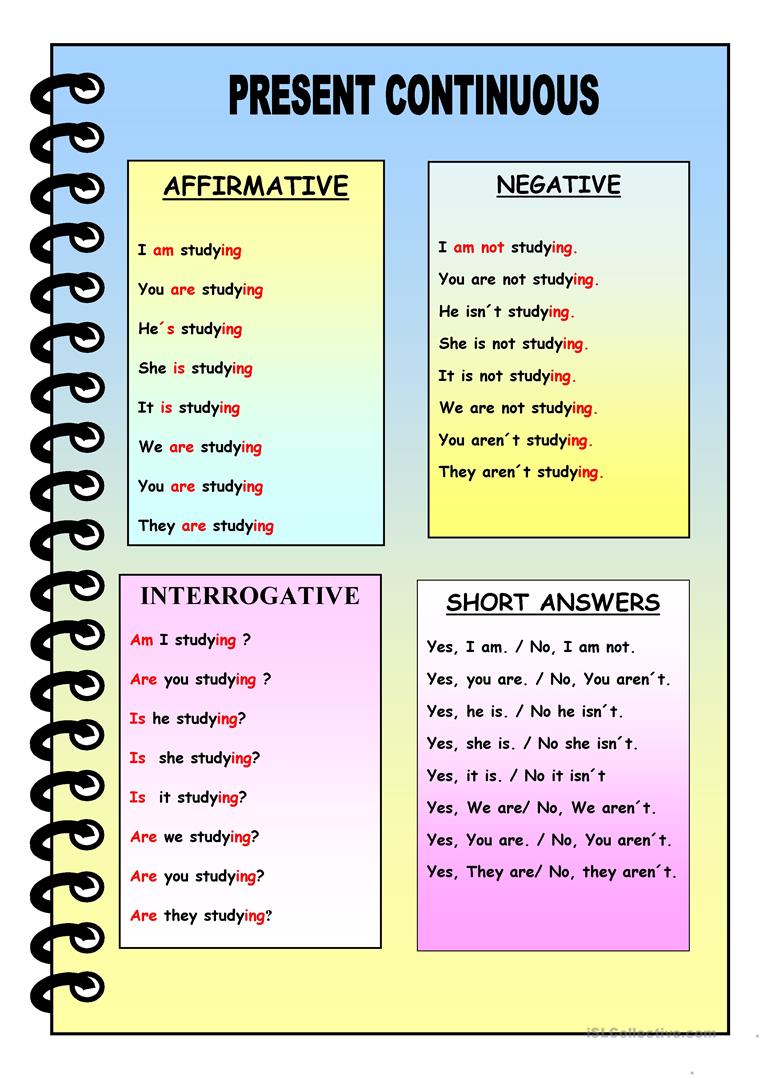
Present continuous Repasando ingles con Lorena
The present continuous describes an action or process that is ongoing (continuous). It is most commonly used to talk about actions that are currently happening and about future plans and intentions. Examples: How to use the present continuous Please keep the noise down. The baby is sleeping. I am flying to Germany in three weeks.

Interactive Exercises Present Simple Or Continuous Exercise Poster
Present simple or present continuous? - English Grammar Today - a reference to written and spoken English grammar and usage - Cambridge Dictionary

Present Continuous Tense Definition & Useful Examples in English ESL
We use the present simple because this is a fact or is generally true. It is raining right now. We use the present continuous because we are talking about an action that is happening right now. It is in progress. It will not continue forever, it is temporary. Tomorrow it might be sunny. Compare these two sentences: